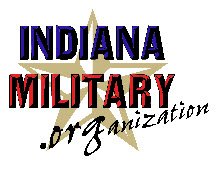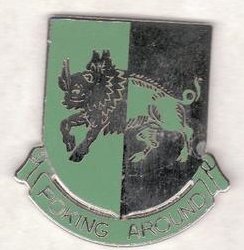|
How Parker�s Crossroads Happened |
|
|
Charles F.
Jacelon
After a short stay in southern England, the 106th infantry division moved into France on landing ships (tank). As we tied up side by side with another LST, I climbed over the rails to look for a friend from the 422nd infantry regiment. After a brief visit I climbed back to my ship and a few moments later the ships separated and started up the river. We bivouacked in damp conditions and the next day drove into the 2nd division positions on a long front line in Germany. Battery a, 589th FA Battalion was positioned on the south side of the road between Auw and Bliealf, in direct support of the 422nd infantry. My assignment was as forward observer sergeant, serving under lt. Willard Crowley.
Cpl. Hugh Mayes was our radio operator and Pfc. Reed was the telephone man.
We had a comfortable cabin for six. Two of the infantrymen shared our quarters. Our observation post was on the forward slope of a hill in a tree line a few hundred yards from our quarters.
Lt. Crowley and reed were on the observation post from 8:00 a.m. until noon, and Mayes and I manned the observation� post from noon until 4:00 p.m.
For the five days that we occupied that position we saw no movement. On the 15th of December we were relieved by another forward observer team. The plan was that the several P.O. teams would rotate around several different positions to familiarize all the officers and crews with our area of operations. Lt Crowley�s team was to spend the next period in the firing battery area for jeep servicing, laundry, baths, etc. We found unoccupied bunks in the hutments in the area and went to bed.
Before dawn on the 16th of December the battery area fell under enemy artillery fire, and several V-1 buzz bombs flew over. The firing battery started firing on orders from the fire direction center. Prum, Germany was at the maximum range of our 105 mm howitzers. Since I had no assigned duties on the guns, I started carrying shells to the gun positions, which fired all day. At one point two German tracked vehicles came up the road from Auw. These vehicles must be the two that Major Goldstein and his bazooka man engaged, although we had no knowledge of his actions. The gun in our left hand position was called out of the fire mission in progress and fired point blank on the tracked vehicles on the road, several hundred yards ahead. At one point this gun had to stop firing to allow one or two American soldiers to enter the battery area from in front. In the late afternoon Major Goldstein called for a jeep for a reconnaissance mission, and I said that I was available. He said that we would go after dark. We started out down a bare slope toward battalion headquarters in a farm house on the road. In the darkness I ran into some steel cable frozen into the ground. After trying to break free for 10 minutes or so, Major Goldstein switched jeeps and some time later a prime mover towed me out of the entangling cable. I proceeded down the hill and spent the rest of the night at battalion headquarters. Before dawn on the 17th the battalion evacuated that first position and moved west two or three miles into our second position in Belgium, taking over an area that had been evacuated by a unit of larger field artillery. Lt. Crowley told us to get some rest for the uncertain day ahead. We foraged for food and for the first time I was introduced to the 10 in 1 Ration which featured lots of good things to eat.
I could not relax
because I heard a German burp gun firing in the woods out in front of our
position. Some of the American GI's liked to fire the ultra-fast machine
pistols the German soldiers carried. I always felt that it was stupid to
risk your life because Americans would fire at the sound not knowing who was holding the Trigger.
For the next couple of nights we traveled with an AAA group, which was heading for France. After that Major Parker reported to division headquarters, in Vielsalm. He was told to bring the battalion to Vielsalm the next day. We returned to the battalion On the road between Sal ch�teau and the crossroads at Baraque-de�Fraiture. We proceeded to the crossroads - past the crossroads a Few hundred yards to a large open field on the left, west side, of the Road. We bivouacked there. (this is the road to Samree). Early the next morning we started out for Vielsalm. I was Driving the lead jeep with Major parker in the passenger seat, as we entered the point where the two roads actually cross, a 2 1/2 ton Army truck came speeding toward us from the direction of Houffalize. Major parker yelled whoa and I stopped the jeep. The Major got out And asked the driver of the truck where he was speeding to. The driver Said that a German tank attack was heading our way from Houffalize. By This time Major Goldstein had walked up from his jeep which was the second vehicle, and he said �you know, we came over here to fight a war And this looks like a good place to start�. Major parker said, �I was thinking the same thing, Major", (Goldstein) set up for the defense of this crossroad. Major Goldstein said, �I am going to ask my big friend here (a tracked vehicle with a dozer blade) to dig me some gun pits�.
This is the true - verbatim - conversation that led to the story Of Parker�s Crossroads, ask Major Goldstein. I believe that initially Major parker entered the building that became Capt. Beans command post the building had a bar, and while Major parker Was doing his planning and map work by flashlight, someone handed him a Bottle of beer that had been found in the basement. Major parker drank Half, then handed it to me, saying, �here driver I want you to have some of this�.
A young woman resident rushed in to get something from a drawer or cabinet and Major parker said to her �you do not have to leave, we will protect you.,� her reply was, �boche come, I go.� And she left. The guns were emplaced, and a sentry, John Schaffner, in a foxhole, was in front of the howitzer and the quad 50 cal. machine guns in a turret on a half track. In the middle of the night the sentry reported that a German patrol on bicycles was examining the �daisy chain�, a string of Antitank mines tied together in a line so that it could be pulled into place across a road in front of the lead enemy vehicle. At that time The howitzer and the four 50 cal. guns fired blindly, and when the volley ended our sentry ran back to the command post. When the mist and the night lifted we found dead and wounded Germans. I did not know of Major Parker's wounding, or of the death of the Sergeant reportedly conversing with Capt. Bean. I remember a G.I. truck on fire speeding through the crossroads from Samree toward Vielsaim. I Remember, that on the evening of Dec. 22, Major Goldstein told me to take a forward observer sergeant to his unit in Manhay about ten miles away. We had a pleasant ride, found Manhay completely deserted, and as we returned to the crossroads the German tanks (which overran our position the next day) were blasting an American tank that was bombed out in the first action a month or two before. When the German tanks stopped firing I drove to the crossroad, turned left and drove the hundred yards or so to the CP and turned into the yard. That night There was sporadic firing around the perimeter, and during the 23rd We fired carbines and rifles which was all we had left, at the tanks and soldiers too far away to be hit. Late in the afternoon the tanks moved across the field between the Vielsalm and Houffalize roads. As our CP started to burn down around us I could see no alternative to surrender, so with several others We walked past the head of the tank column into captivity. The story of subsequent events is large enough to fill several pages, but that is another story. I would like to make two points regarding the above.
First! An experienced soldier might be safer in a combat situation, but not necessarily. Except for the German patrol that our guns shot up, I did not see any woundings or killings at the crossroad. While a sergeant talking to Capt. Bean was killed on the spot, the conclusions being that those of us who were not killed or wounded were, above all else - very lucky.
Second: the award of the P.O.W. medal. A person who becomes a P.O.W. had to be in close proximity with the enemy, the medal would prove that. I do not believe that a man should be decorated for surrendering to the enemy, on the other hand I feel no stigma for becoming a P.O.W. It was the only thing to do under the circumstances. The other facet of this P.O.W. business is the terrible situation That occurred just a few miles from Baraque de Fraiture at Malmedy, at the same time, where several Americans were overrun by the enemy and surrendered. They were herded into a field and were machine gunned and killed after being rendered defenseless.
The final comment I would like to make on this subject. My wife With her nine months old son was notified in January that I was missing In action. The first solid information that she received on my status Was a V-mail letter she received one morning early in April, delivered By the landlord, Mr. Klinck, while she was talking to her friend on the phone. When she read the letter she shouted to Mr. Klinck and to her friend �it's from Charlie. He is alive in a hospital in England.� Everything else was anti-climatic.
Charles f. Jocelyn 27 Copperfield drive Cream ridge, NJ 08514 |
|
|
|
 Page last revised
09/15/2016 Page last revised
09/15/2016James D. West www.IndianaMilitary.org Host106th@106thInfDivAssn.org |
